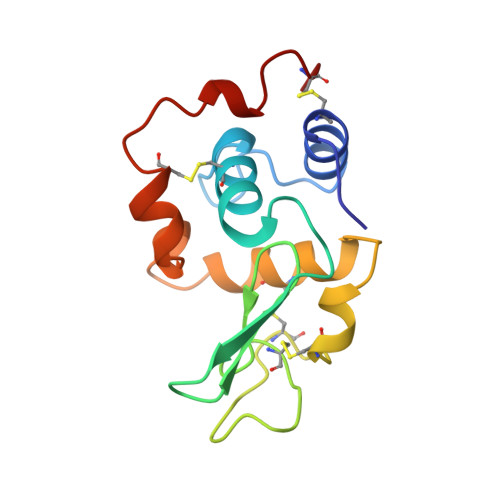Contribution of water molecules in the interior of a protein to the conformational stability.
Takano, K., Funahashi, J., Yamagata, Y., Fujii, S., Yutani, K.(1997) J Mol Biology 274: 132-142
- PubMed: 9398521
- DOI: https://doi.org/10.1006/jmbi.1997.1365
- Primary Citation of Related Structures:
2HEA, 2HEB, 2HEC, 2HED, 2HEE, 2HEF - PubMed Abstract:
Water molecules frequently occur in the interior of globular proteins. To elucidate the contribution of buried water molecules to the conformational stability of a protein, we examined the crystal structures and the thermodynamic parameters of denaturation of six Ile to Ala/Gly mutant human lysozymes, in which a cavity is created at each mutation site by the substitution of a smaller side-chain for a larger one. One or two ordered water molecules were found in the cavities created in some mutants (I106A, I59A and I59G). The cavity volumes for these three mutants were bigger than those that remained empty in the other mutants. The stability of the mutant proteins with the newly introduced water molecules was about 8 kJ/mol higher than that expected from the change in hydrophobic surface area (DeltaDeltaASAHP) exposed upon denaturation. It was concluded that a water molecule in a cavity created in the interior of a protein contributes favorably to the stability.
- Institute for Protein Research, Osaka University, Japan.
Organizational Affiliation:

















